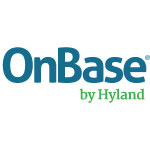More than ever before, government officials are under pressure to provide easy access to public records – both for their own people, as well as the citizens they serve. Agency leaders are actively pursuing solutions to meet new demands, but they often make the mistake of seeking single products for single problems.
However, considering the diversity of issues facing government today, it’s necessary to think more holistically about solution sets. Today, federal agencies must address complex challenges, including:
- Calls for efficiency. OMB Memo 17-22 called for agencies to “create a lean, accountable, more efficient government” by scrutinizing processes, eliminating redundant programs and reducing the federal workforce. While the memo’s two immediate deadlines have passed, agencies are still obligated to execute efficiency plans. Additionally, performance tracking on these reform plans will commence in February, 2018.
- Pressure for digital records. According to the Office of the Chief Records Officer, the National Archives and Records Administration (NARA) “will no longer accept transfers of permanent or temporary records in analog formats and will accept records only in electronic format and with appropriate metadata” by Dec. 31, 2022.
- Burdens of manual processes. Even without regulatory pressure, agencies are forced to reconsider the way they manage records. An overreliance on paper-based and manual public records request fulfillment makes meeting request deadlines difficult. Plus, these Manual processes for ingesting, analyzing and meeting records requests consume valuable time and labor that government already has in short supply.
Most federal leaders understand the need to address these diverse demands and are seeking ways to move forward in the digital age.
However, problems arise when agencies seek immediate, one-off solutions to single problems. Not only do these ad-hoc technology additions increase the cost and complexity of IT infrastructures, they also create new hurdles for agencies looking to digitize.
Training on one-off solutions that often don’t integrate with other tools can decrease employee and IT productivity. Additionally, many solutions that only tackle digitization at one point in a records management cycle actually make it more difficult to fully understand records processes and address requests.
For instance, a solution that digitizes a record at the time of completion, rather than at ingestion of a paper-based request, may meet compliance standards for records management. However, that solution likely won’t incorporate data such as time-to-fulfillment, records ownership, or classification types that could be used both to better understand the request and, more importantly, help agencies make their processes more effective.
With limited budgets and a dwindling workforce, agencies can’t afford to buy one-off solutions only address single problems. Instead, leaders should recognize that these diverse pressures to reform actually create a single objective to transform operations from the beginning to end of the records management cycle. With that understanding, it’s imperative to seek a single platform that can comprehensively address multiple needs.
An effective enterprise content management (ECM) system, such as Hyland’s OnBase, can accomplish many of the objectives that federal government is required to achieve. It can automate and digitize records, allowing agencies to meet records management mandates. But more than that, it can be used to consolidate and improve records processes.
With an ECM, agencies can:
- Simplify request submission and delivery for citizens. Requests can be ingested via digital forms or paper forms can be automatically digitized once submitted to an agency. That processes meets citizen accessibility standards while ensuring agencies have necessary information at the beginning of the records management cycle.
- Provide comprehensive search. An ECM connects all agency records in a single place, making it easy for employees to search for and fulfill records requests. At the same time, managers can be assured that their records are properly classified and stored to meet mandates.
- Improve process transparency and reporting. With an ECM, agencies can track the entire process of records management. That allows leaders to identify pain points and potential areas of improvement in their processes, ultimately enabling them to increase efficiency and productivity.
Not only can an ECM achieve many tasks from a single location, it can also easily integrate with other solutions across the enterprise. As new pressures and reforms arise in federal government, agencies can be prepared to tackle them with a single digital platform.
From online request capabilities and comprehensive record searches to digital delivery, OnBase improves government processes from beginning to end. That’s the kind of holistic transformation agencies will require to meet the diverse pressures facing government today.






Leave a Reply
You must be logged in to post a comment.